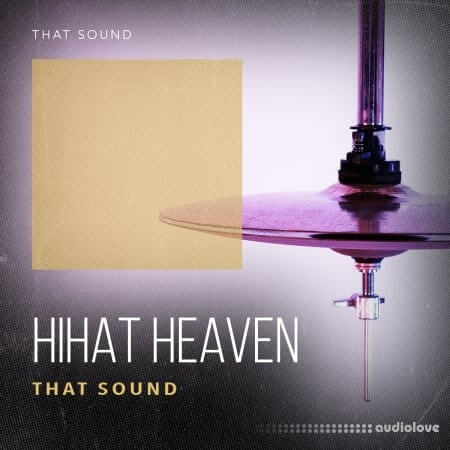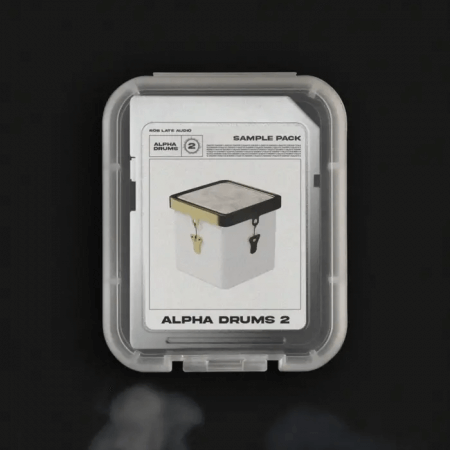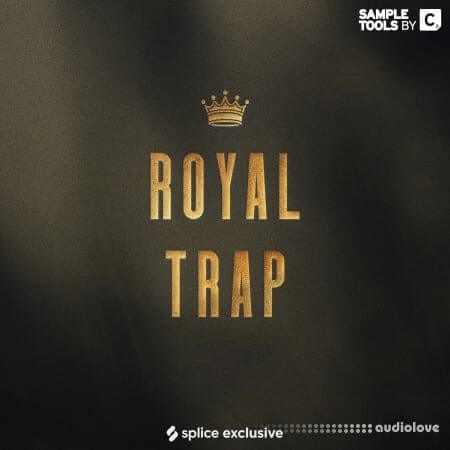Sonus Paradisi - The Forcalquier Organ Model V.2 (1627-2000) Hauptwerk WAV
Sonus Paradisi - The Forcalquier Organ Model V.2 (1627-2000) Hauptwerk WAV | 5.53 GB
The history of the organ in the church of Forcalquier is very turbulent and only a part of the material remained from the baroque period, from the original organ. Most of it comes from a 19th and 20th century restorations.
The cathedral in a small and picturesque French city called Forcalquier had a small organ with 9 stops built by Pierre Marchand in 1627. It is said that during the time of the Revolution, the church and the organ served for the embellishments of the feasts of the new regime. In 1803, the Christian worship was restored in the church. Half a century later, Prosper Antoine Moitessier rebuilt the organ completely, reusing also the ancient material. The Grand orgue had now 22 stops, a Rcit expressif (enclosed in a swell-box) and Pedal with 4 stops. The organbuilders Cavaill-Coll – Mutin made further reconstruction in 1932. They extended the pedal board range and changed the action to the pneumatic one. Recently, the organ was carefully restored and enlarged in two steps in 1981 and 2000 by Alain Sals. The action was changed back to the mechanical one, new Positif de dos was installed using the remaining old pipes, some new stops were added, so that now the organ has 36 speaking stops. The swell-box of the Rcit was most probably removed during this restoration.
The composition and the timbre of the organ is typically French, although rather sharp, "chiffy", with a strong feeling of „ingalit“, i. e. there are numerous voicing breaks where suddenly the timbre of the stop changes. The most prominent one is the division of the Voix humaine of the Rcit, which is in fact composed of two different stops, one for the Bass part and the other for the Treble part of the keyboard compass. The specification given below gives also the idea how old every stop is, so, whether it comes from Marchand (1627), Moitessier (1847) or Cavaill-Coll-Mutin (1932) or Sals (2000).
Couplers:
I / Ped.
II / Ped.
III/ Ped.
I / II - Positif to Grand Orgue
III / I - Rcit to Positif, not original, added only virtually
Tremulants:
Positif tremulant, not original, added only virtually
Rcit tremulant, not original, added only virtually
Wedge Bellows:
It is generally agreed by experts, that it is the wind behavior which makes the beauty of the organ sound. In early times, wedge bellows were used in organs which were pulled up by "calcants". There were usually several sets of bellows to feed the organ so that the wind achieved some stability. Nevertheless, the procedure of pumping and also the changing torque of the falling moving board as the bellows were deflating, caused slight changes in pressure, slight oscilations which affected the pipe speech. Also, the wind stability was so delicate that playing on one manual with just one or two stops affected the speech of pipes played on a different manual. After the parallel rise bellows were invented, and after organ blowers invaded churches, these subtle wind behavior was lost to great deal. With the help of Hauptwerk, we can now model the original situation of the hand pumped bellows. Together with carefully modelled response of pipes, it is completely new experience of the organ sound.
note:
read instruction.txt
home page:
http://bit.ly/2edcbcH
Sonus Paradisi - The Forcalquier Organ Model V.2 (1627-2000) Hauptwerk WAV:
http://nitroflare.com/view/162C18BAE58B068/sptfom2.part01.rar
http://nitroflare.com/view/3EFC0C471FA930A/sptfom2.part02.rar
http://nitroflare.com/view/D3CD98AF457B77F/sptfom2.part03.rar
http://nitroflare.com/view/81560CE9F8F73A3/sptfom2.part04.rar
http://nitroflare.com/view/4EF2F713FCF58F3/sptfom2.part05.rar
http://nitroflare.com/view/4479EAA2F1706AA/sptfom2.part06.rar
http://nitroflare.com/view/8ECBE127B840D28/sptfom2.part07.rar
http://nitroflare.com/view/439A063D32D126C/sptfom2.part08.rar
http://rapidgator.net/file/10e40d1a1ca4912d33e1c0421e4b714f/sptfom2.part01.rar.html
http://rapidgator.net/file/a645c26b08250203a1c9468f6014d9ce/sptfom2.part02.rar.html
http://rapidgator.net/file/2ea2100354d6d929bca1319c0e53de6d/sptfom2.part03.rar.html
http://rapidgator.net/file/d1a7cb77d1f6b3dfa05889a2390bbbce/sptfom2.part04.rar.html
http://rapidgator.net/file/0ce1ec33be04f2578faa5b316332ebde/sptfom2.part05.rar.html
http://rapidgator.net/file/01d1859c53809a617402a4124aaffde1/sptfom2.part06.rar.html
http://rapidgator.net/file/b2494fadff60f1fcb18ed5659e62340b/sptfom2.part07.rar.html
http://rapidgator.net/file/29f2fb7fd08bdf5bf336ff77655b19f9/sptfom2.part08.rar.html
http://nitroflare.com/view/3EFC0C471FA930A/sptfom2.part02.rar
http://nitroflare.com/view/D3CD98AF457B77F/sptfom2.part03.rar
http://nitroflare.com/view/81560CE9F8F73A3/sptfom2.part04.rar
http://nitroflare.com/view/4EF2F713FCF58F3/sptfom2.part05.rar
http://nitroflare.com/view/4479EAA2F1706AA/sptfom2.part06.rar
http://nitroflare.com/view/8ECBE127B840D28/sptfom2.part07.rar
http://nitroflare.com/view/439A063D32D126C/sptfom2.part08.rar
http://rapidgator.net/file/10e40d1a1ca4912d33e1c0421e4b714f/sptfom2.part01.rar.html
http://rapidgator.net/file/a645c26b08250203a1c9468f6014d9ce/sptfom2.part02.rar.html
http://rapidgator.net/file/2ea2100354d6d929bca1319c0e53de6d/sptfom2.part03.rar.html
http://rapidgator.net/file/d1a7cb77d1f6b3dfa05889a2390bbbce/sptfom2.part04.rar.html
http://rapidgator.net/file/0ce1ec33be04f2578faa5b316332ebde/sptfom2.part05.rar.html
http://rapidgator.net/file/01d1859c53809a617402a4124aaffde1/sptfom2.part06.rar.html
http://rapidgator.net/file/b2494fadff60f1fcb18ed5659e62340b/sptfom2.part07.rar.html
http://rapidgator.net/file/29f2fb7fd08bdf5bf336ff77655b19f9/sptfom2.part08.rar.html
Links are dead? You can send request (you must be registred user) to re-upload articles
with dead links and our team will try to re-upload files for you as soon as possible.
with dead links and our team will try to re-upload files for you as soon as possible.
Related News:
 Inspired Acoustics Kispest Pipe Organ Samples KO HAUPTWERK
Inspired Acoustics Kispest Pipe Organ Samples KO HAUPTWERKInspired Acoustics Kispest Pipe Organ Samples KO HAUPTWERK | 5.98 GB Kispest Pipe Organ Samples (KO) Personal Edition is a 38-stop romantic virtual pipe organ chromatically sampled stop-by-stop. The Kispest Pipe Organ is the first ever virtual pipe organ to feature a unique realtime spatial adjustability in its Professional Edition, and Dynamic KeyboardMass™ control in all its Editions. The...
 Sonus paradisi Litomysl Organ Model V.2 Hauptwerk
Sonus paradisi Litomysl Organ Model V.2 HauptwerkSonus paradisi Litomysl Organ Model V.2 Hauptwerk | 6.84 GB The aim of the project is to make the concert organ from Litomysl (Grygar, 2001) available for the Hauptwerk software sampler. This modern organ is large enough (4 manuals + pedal, 51 sounding stops) to fit the needs of any organ music style, early Spanish music, French or German romantic music, German baroque, XXth century music or...
 Orgue De Forcalquier Kontakt v5.1
Orgue De Forcalquier Kontakt v5.1Orgue De Forcalquier Kontakt v5.1 | 1.12 GB The history of the organ in the church of Forcalquier is very turbulent and only a part of the material remained from the baroque period, from the original organ. Most of it comes from a 19th and 20th century restorations....
 Hauptwerk - Prague Baroque organ (48/16 version)
Hauptwerk - Prague Baroque organ (48/16 version)Hauptwerk - Prague Baroque organ (48/16 version) | 2.37 GB While many virtual models of organs have one specific instrument as the template, we decided to take different approach this time. The advantage of presenting a "South German Organ Model" without a direct connection to certain specific instrument is that it is more clearly shown that all the organs of this family in the given period are...






Comments for Sonus Paradisi - The Forcalquier Organ Model V.2 (1627-2000) Hauptwerk WAV:
No comments yet, add a comment!